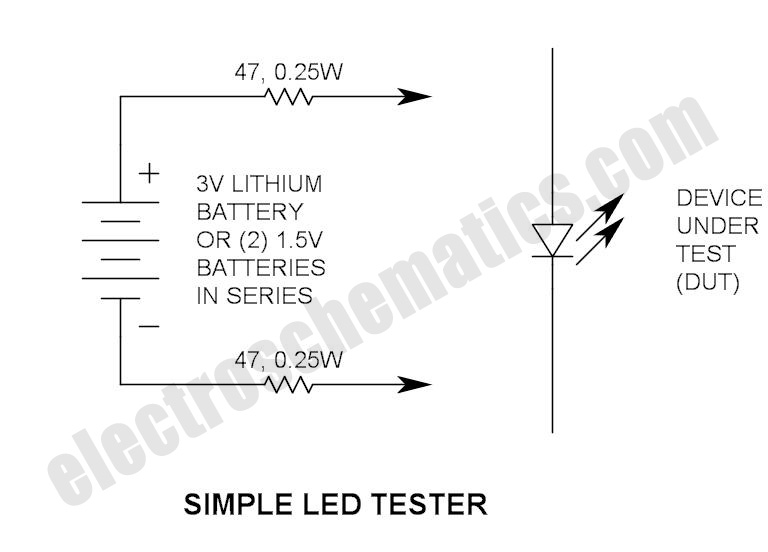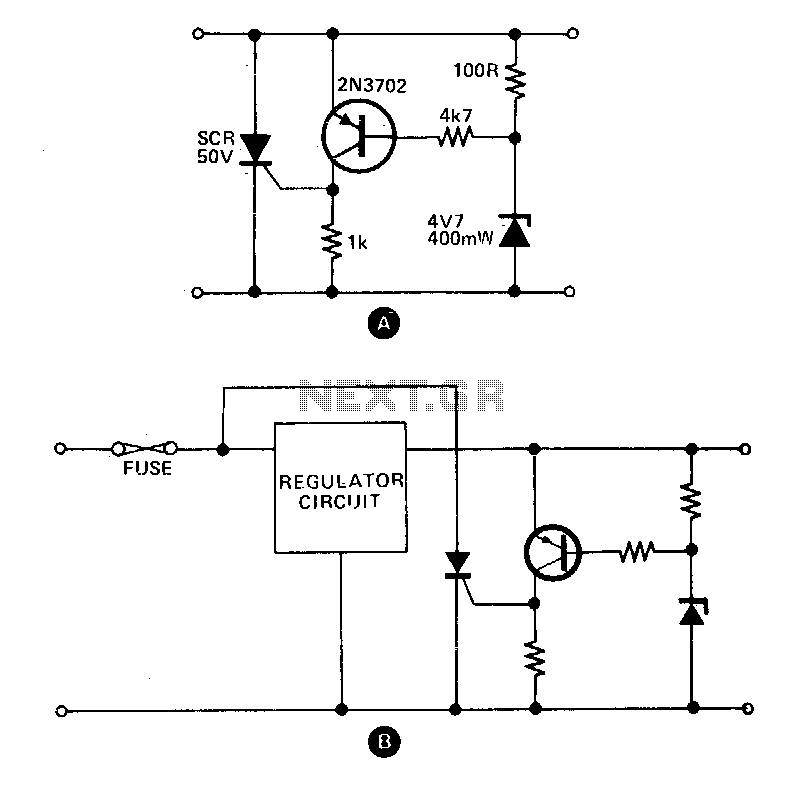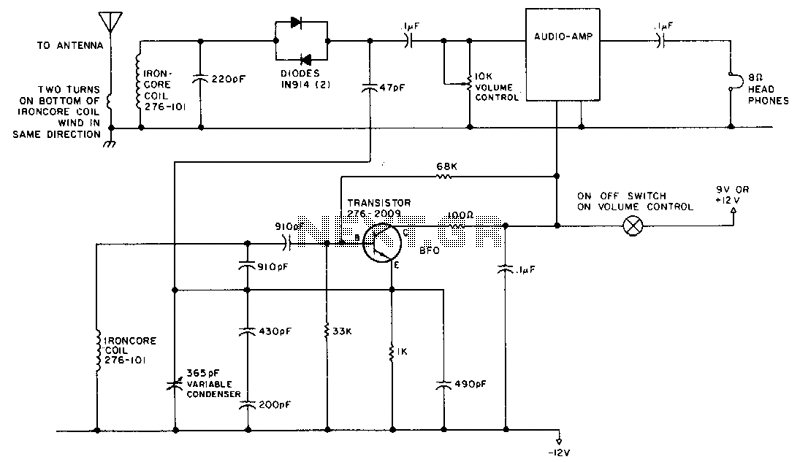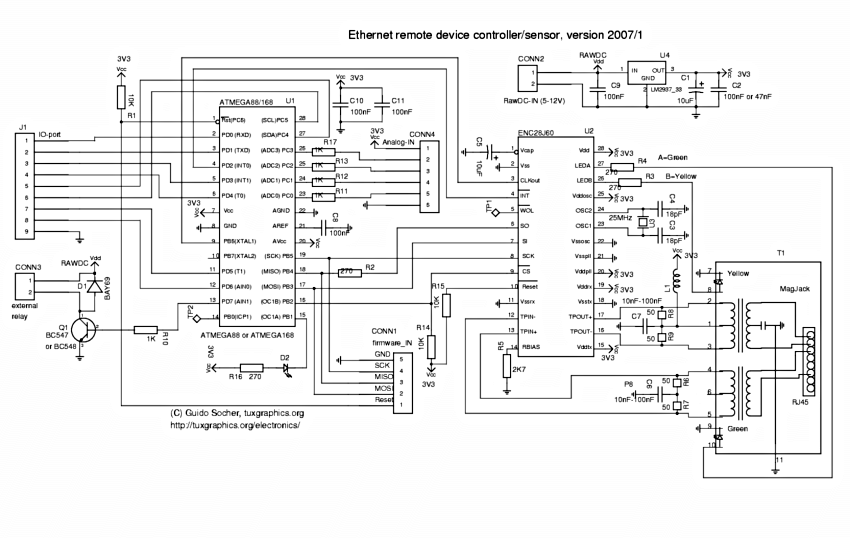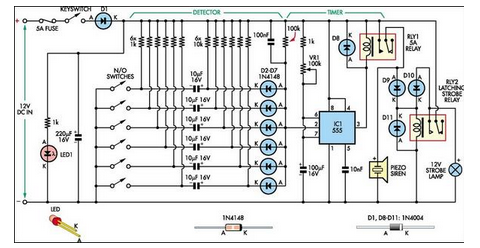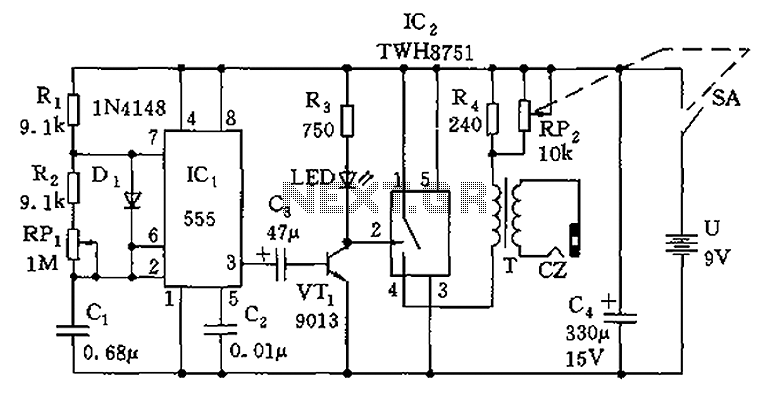
simple mic pre-amp based LM358
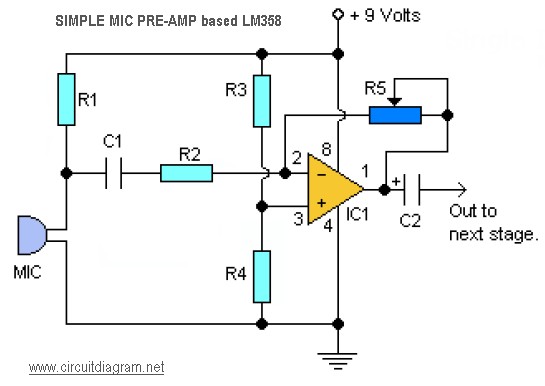
This is a simple audio microphone preamplifier circuit based on a single LM358 IC. The circuit is straightforward, cost-effective, and easy to construct. The component parts list includes: R1, R3, R4 = 10K; R2 = 1K; R5 = 100K-1M potentiometer; C1 = 0.1uF; C2 = 4.7uF/16V; IC1 = LM358 dual op-amp, single supply; Mic = electret microphone. Additionally, there is a more complex microphone preamplifier circuit utilizing a 12AX7 tube. This circuit requires intermediate to advanced skills for construction. All capacitors with a value of 33uF are rated at 16V, while the others are rated at 50V unless stated otherwise. Resistors marked with "#" are 1% tolerance. Furthermore, there is a simple dynamic microphone compressor circuit that yields satisfactory results. The audio output is notably impressive. This circuit operates on a simple principle where the first transistor functions as a microphone preamplifier, the second transistor acts as a buffer, and the third transistor is part of the feedback circuit. The supply voltage for this circuit is straightforward. It also features a basic audio preamplifier using a single 2N3904 transistor. This uncomplicated circuit provides adequate gain to weak audio signals, such as those from an electret microphone. It can be utilized in front of an RF oscillator to create a highly sensitive RF transmitter. The circuit consumes low current (approximately 2mA), ensuring prolonged battery life. It is constructed based on a low-noise, high-gain two-stage amplifier using PNP and NPN transistors, with DC negative feedback through R6 to stabilize operating conditions effectively. Additionally, there is a microphone compressor circuit that employs transistors as active components. VR1 and VR2 are used to adjust the tone from the microphone, while VR3 and VR4 enhance the audio signal within the microphone compressor. C10 is essential for this circuit.
The LM358-based audio microphone preamplifier circuit is designed to amplify low-level audio signals, making it suitable for use with electret microphones. The circuit's architecture employs a dual operational amplifier, allowing for a compact design while providing sufficient gain. The resistors and potentiometer values are selected to optimize the input impedance and gain characteristics, ensuring compatibility with various microphone types.
In the more complex 12AX7 microphone preamplifier circuit, the use of vacuum tubes introduces unique audio characteristics, often preferred for their warmth and harmonic distortion. This circuit requires careful construction and tuning, suitable for individuals with intermediate or advanced skills. The choice of capacitors, particularly those rated at 33uF, is critical for coupling and decoupling purposes, ensuring that the audio signal remains intact while blocking DC offsets.
The dynamic microphone compressor circuit enhances audio signals by managing dynamic range, which is crucial for achieving professional sound quality. The integration of multiple transistors allows for effective signal processing, with the first stage amplifying the microphone signal, the second stage buffering the output, and the third stage providing feedback for stability. This configuration is essential for maintaining consistent audio levels, particularly in live sound applications.
The 2N3904 transistor-based preamplifier circuit is an excellent choice for applications requiring low power consumption without sacrificing audio quality. Its straightforward design makes it accessible for beginners, while still providing adequate performance for various audio projects. The use of negative feedback through R6 ensures that the amplifier operates within its optimal range, minimizing distortion and enhancing fidelity.
Overall, these circuits exemplify fundamental principles in audio electronics, showcasing various methods for amplifying and processing audio signals. They are suitable for a range of applications, from simple DIY projects to more complex audio systems.Here the simple audio mic pre amplifier circuit based on single IC LM358. The circuit is very simple, inexpensive and easy to built. Component Parts List: R1, R3, R4 = 10K R2 = 1K R5 = 100K-1M Potensiometer C1 = 0. 1uF C2 = 4. 7uF/16V IC1 = LM358 dual op-amp single supply Mic = Electret Microphone. The following diagram is the circuit diagram of tu be mic pre amplifier 12AX7. This circuit is little hard to built. You must have an intermediate or advanced skills to build this circuit. All capacitors with value of 33uF are 16V, while the all others are 50V unless marked otherwise. Resistors marked with "#" are 1%. The circuit below is a Dynamic Mic Compressor circuit is simple but the results are quite satisfactory. Audio output sounded outstanding. The principle of this circuit is very simple, the first transistor is used as Mic Pre-Amp. Then a second transistor used as a buffer. And the third transistor is a feedback circuit. Supply voltage. This is a simple audio Pre-Amplifier with single transistor 2N3904. This easy circuit provides good gain to weak audio signals such as electret microphone. Use it in front of an RF oscillator to make an RF transmitter that`s very sensitive to sound. This circuit consume low current supply (about 2mA), so will have a long battery life for supplying the circuit.
The circuit built based on a low noise, high gain two stage PNP and NPN transistor amplifier, using DC negative feedback through R6 to stabilize the working conditions quite precisely. Below is a mic compressor circuit that uses transistors as active components. VR1 and VR 2 is used to control the tone from the microphone, while VR3 and VR4 strengthening works to control the audio signal in the compressor mic.
C10 must be used in this circuit. The circuit I got from my local computer. 🔗 External reference
The LM358-based audio microphone preamplifier circuit is designed to amplify low-level audio signals, making it suitable for use with electret microphones. The circuit's architecture employs a dual operational amplifier, allowing for a compact design while providing sufficient gain. The resistors and potentiometer values are selected to optimize the input impedance and gain characteristics, ensuring compatibility with various microphone types.
In the more complex 12AX7 microphone preamplifier circuit, the use of vacuum tubes introduces unique audio characteristics, often preferred for their warmth and harmonic distortion. This circuit requires careful construction and tuning, suitable for individuals with intermediate or advanced skills. The choice of capacitors, particularly those rated at 33uF, is critical for coupling and decoupling purposes, ensuring that the audio signal remains intact while blocking DC offsets.
The dynamic microphone compressor circuit enhances audio signals by managing dynamic range, which is crucial for achieving professional sound quality. The integration of multiple transistors allows for effective signal processing, with the first stage amplifying the microphone signal, the second stage buffering the output, and the third stage providing feedback for stability. This configuration is essential for maintaining consistent audio levels, particularly in live sound applications.
The 2N3904 transistor-based preamplifier circuit is an excellent choice for applications requiring low power consumption without sacrificing audio quality. Its straightforward design makes it accessible for beginners, while still providing adequate performance for various audio projects. The use of negative feedback through R6 ensures that the amplifier operates within its optimal range, minimizing distortion and enhancing fidelity.
Overall, these circuits exemplify fundamental principles in audio electronics, showcasing various methods for amplifying and processing audio signals. They are suitable for a range of applications, from simple DIY projects to more complex audio systems.Here the simple audio mic pre amplifier circuit based on single IC LM358. The circuit is very simple, inexpensive and easy to built. Component Parts List: R1, R3, R4 = 10K R2 = 1K R5 = 100K-1M Potensiometer C1 = 0. 1uF C2 = 4. 7uF/16V IC1 = LM358 dual op-amp single supply Mic = Electret Microphone. The following diagram is the circuit diagram of tu be mic pre amplifier 12AX7. This circuit is little hard to built. You must have an intermediate or advanced skills to build this circuit. All capacitors with value of 33uF are 16V, while the all others are 50V unless marked otherwise. Resistors marked with "#" are 1%. The circuit below is a Dynamic Mic Compressor circuit is simple but the results are quite satisfactory. Audio output sounded outstanding. The principle of this circuit is very simple, the first transistor is used as Mic Pre-Amp. Then a second transistor used as a buffer. And the third transistor is a feedback circuit. Supply voltage. This is a simple audio Pre-Amplifier with single transistor 2N3904. This easy circuit provides good gain to weak audio signals such as electret microphone. Use it in front of an RF oscillator to make an RF transmitter that`s very sensitive to sound. This circuit consume low current supply (about 2mA), so will have a long battery life for supplying the circuit.
The circuit built based on a low noise, high gain two stage PNP and NPN transistor amplifier, using DC negative feedback through R6 to stabilize the working conditions quite precisely. Below is a mic compressor circuit that uses transistors as active components. VR1 and VR 2 is used to control the tone from the microphone, while VR3 and VR4 strengthening works to control the audio signal in the compressor mic.
C10 must be used in this circuit. The circuit I got from my local computer. 🔗 External reference
